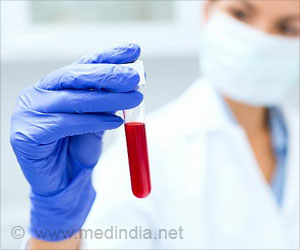GIE: Gastrointestinal Endoscopy has published a special issue for March on colonoscopy and colorectal cancer in recognition of National Colorectal Cancer Awareness Month during March

"March 2011 marks the twelfth annual National Colorectal Cancer Awareness Month. Numerous efforts are made nationwide to increase patient knowledge regarding colorectal cancer, increase screening efforts and lifestyle changes to reduce risk. As gastroenterologists and practicing endoscopists, much of our daily efforts revolve around screening, diagnosis, and treatment for this malignancy. Therefore, GIE is devoting this issue to topics germane to these endeavors," said GIE Editor Glenn M. Eisen, MD, MPH, FASGE. "Among the important studies in this special issue is research reporting that a substantial number of colorectal cancer deaths have been prevented through the use of colonoscopy, however, many more deaths could have been prevented with more widespread use of this screening method. Colonoscopy can be an effective tool to reduce mortality rates from this largely preventable disease, but we still have a long way to go in getting more people screened for colorectal cancer."
"Colorectal cancer mortality prevented by use and attributable to nonuse of colonoscopy"Colonoscopy has contributed to decreasing mortality rates and it is now the predominant tool for colorectal cancer screening in the United States. Results from national health surveys indicate that approximately half of the population eligible for colorectal cancer screening has had either a colonoscopy or sigmoidoscopy in the past ten years. To date, the effectiveness of the use of colonoscopy in reducing colorectal cancer-related mortality has only been directly shown in epidemiological studies. The effectiveness of colonoscopy use is indirectly supported by studies that showed decreases in colorectal cancer mortality associated with sigmoidoscopy and by studies that observed decreases in colorectal cancer incidence associated with removal of adenomatous (precancerous) polyps as well as with colonoscopy in general.
The aim of this study was to estimate the impact of current colonoscopy use on colorectal cancer mortality and the further potential of colonoscopy to reduce colorectal cancer mortality in the U.S. population by assuming effectiveness as reported in published epidemiological studies. Data from three sources were combined to perform the analysis. Data on history of colonoscopy use were obtained from the National Health Interview Survey; data on colorectal cancer mortality and on population sizes were drawn from the Surveillance, Epidemiology, and End Results program database; and estimates of the effectiveness of colonoscopy were derived from the medical literature. The year 2005 was the latest for which mortality data and suitable colonoscopy use were available. The study was limited to the population aged 50 years and older, which reflects the screening-eligible age.
A statistical analysis was performed and showed that approximately 13,800 to 22,000 colorectal cancer deaths (depending on the assumed effectiveness) could have been prevented in 2005, whereas about 7,300 to 11,700 were actually prevented through the use of colonoscopy. Therefore, approximately twice as many colorectal cancer deaths could have been prevented by colonoscopy than were actually prevented.
Other highlights from the March issue:
Advertisement
"Dynamic patient position changes during colonoscope withdrawal increase adenoma detection: a randomized, crossover trial" Good colonoscopic withdrawal technique is associated with lower adenoma (precancerous polyp) miss rates and there has been a recent resurgence of research interest in elements of basic operator technique. Dynamic patient position changes during colonoscope withdrawal can improve luminal distension. In this study, researchers assessed whether position changes also improve polyp and adenoma detection, and the study concludes just that: dynamic position changes during colonoscope withdrawal significantly improved polyp and adenoma detection.
Advertisement
Source-Eurekalert















